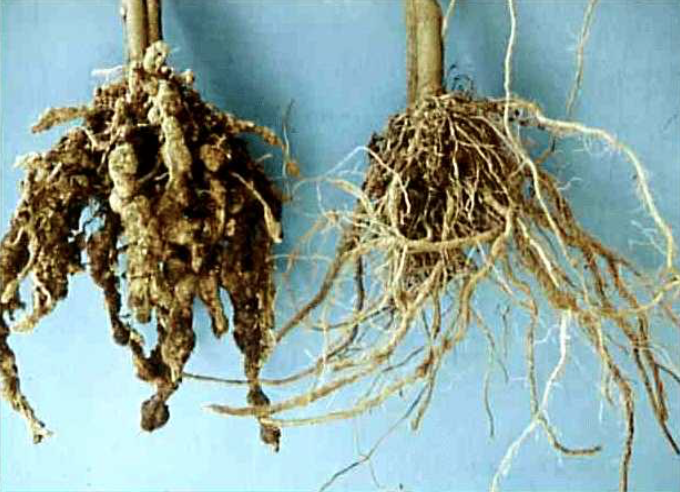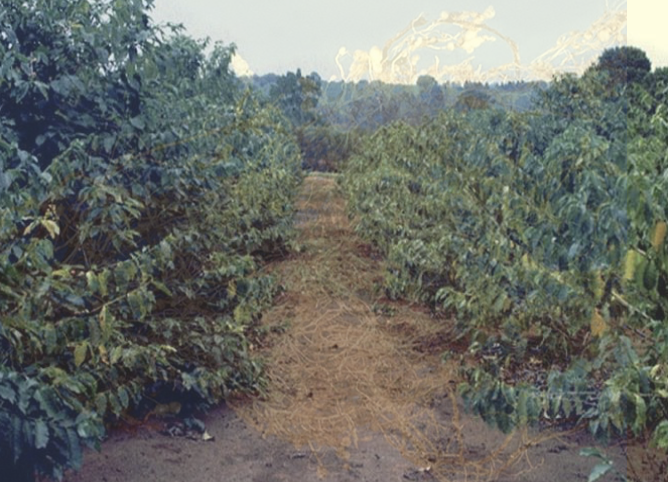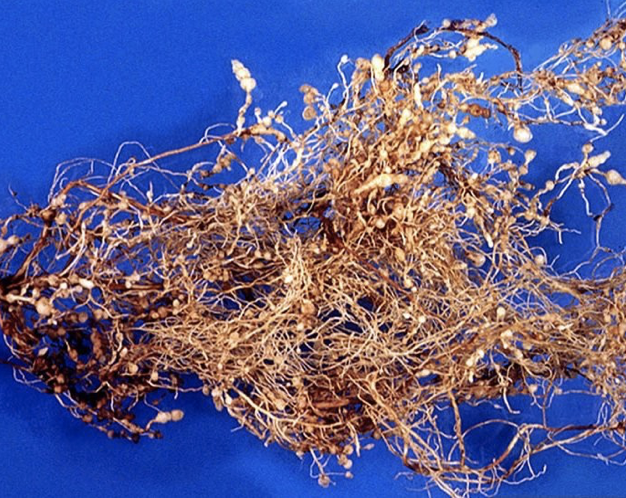Root-knot nematodes (Meloidogyne spp.)
Credit: Biovision-Infonet
Root-knot nematodes are very destructive to tomatoes. Damage is most serious on light sandy soils in furrow-irrigated crops. The nematodes cause small lumps known as root knots or galls on the roots. Heavily infected roots are severely distorted and swollen. In time the roots rot. The affected plants are either stunted or have tendency to wilt or even die in hot weather. The affected plants, in most cases, just wilt with the foliage still green – without yellowing. The nematode problem is primarily due to improper crop rotation.

(c) A. M. Varela, icipe
| What to do: Rotate with tomato, brassicas or cereals. Do not locate seedbeds where susceptible vegetables (e.g. okra, sweet pepper, eggplant, Irish potato, carrot or cucurbits) have been previously grown. Use tolerant or resistant tomato varieties (e.g. “Roma VNF”, “Shengena”,”Tengeru-97″, “Kentom”, “Caracas”, “Carmello”, “Diego”, “Piersol” and “Vegas”). Varieties with the “VFN” label exhibit some resistance – the “N” stands for Nematode-tolerant. Use mixed cropping or grow marigolds (Tagetes spp.) or sunnhemp (Crotalaria juncea). Maintain high levels of organic matter in the soil (manure and compost). Amend the soil with neem. Mixing neem cake (residue of neem seed after expression of neem oil) increases the organic content of the soil and kills nematodes due to the naturally-occurring nematicidal compounds in neem. More on neem click here |
In Coffee
Root-knot nematodes (Meloidogyne spp.)

(c) Jonathan D. Eisenback, Virginia Polytechnic Institute and State University, Bugwood.org

(c) Roger Lopez-Chaves, Universidad de Costa Rica, Bugwood.org
Important nematodes attacking both Arabica and Robusta coffee are Meloidogyne arenaria, Meloidogyne decalineata and Meloidogyne incognita, causing root knots and galls. Other nematode species include Pratylenchus coffeae, Radopholus similis, Rotylenchus iperoiguensis and Rotylenchus pararobustus.
Field symptoms are typically of stunted, poorly growing plants with yellowing leaves. Infected root systems show characteristic knots or galls, the severity of which varies with the degree of nematode infection and species and variety of plant parasitized. Strategies of cultural control are less well developed and crop rotations are difficult to design because of the wide host range of Root-knot nematodes. Groundnuts or maize, which are both poor or non-hosts to M. incognita, have been evaluated for use in cropping systems designed to manage this nematode.What to do:
- Ensure seedlings are nematode-free prior to transplanting
- Incorporate neem extracts into the seed beds where nematode problem is known to occur